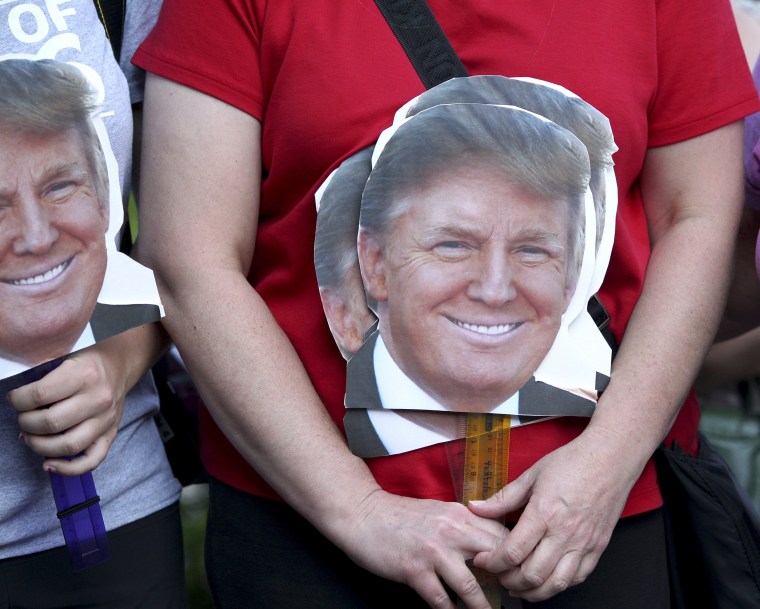As businessman Donald Trump has climbed to the top of the Republican primary polls, political junkies have gone scrambling to explain or describe the coalition of people supporting him. But the candidate has offered his own analysis — he says he is giving voice to the long-dormant "silent majority."
Those words echo back to former President Richard M. Nixon and have been attacked by critics who maintain they are code for racial divisiveness. They were part of Mr. Nixon’s Southern Strategy in 1968, which aimed to appeal to Southern white voters and their unease with the civil rights movement.
But leaving aside what Mr. Trump actually means with the words “silent majority,” there are the words themselves, and in the case of Republican front-runner they don’t really match the early 2016 campaign or the surrounding poll numbers.
First, let’s consider the “silent” part of the phrase. Many words can and have been used to describe Mr. Trump’s run for the White House, but “silent” is probably not the most apt. In fact, Mr. Trump’s media prowess and his penchant for provocative words almost guarantee that he is not bringing back the silent majority. At most, he could be announcing the arrival of the “formerly silent majority.”
That’s actually an important distinction.
When former President Nixon first used the phrase “silent majority” it was a plea for support in a country where the enthusiasm and activity was coming from a loud segment of America that wanted to move away from him and his party’s policies, particularly concerning the Vietnam War. Mr. Trump and his supporters are not hidden. They have made themselves and their feelings well-known – in public polling, on social media and in person, flocking to Trump rallies from New Hampshire to Alabama.
The second part of the phrase is perhaps more problematic. Simply put, Mr. Trump’s poll numbers, as impressive as his rise has been, are nowhere near majority status.
Currently, Mr. Trump sits somewhere between 25 percent and 30 percent in polls measuring support for the GOP nomination. That means even among Republicans, those who don’t currently support Mr. Trump far outnumber those who do support him.
In head-to-head general election match ups, Mr. Trump does better, garnering somewhere around 40 percent of the vote against Democratic front-runner Hillary Clinton. But that’s likely because the Republican alternative for president (which Mr. Trump is assumed to be in those polls) is almost always going to garner 40 percent in the polls.
Since 1976, each major-party candidate for president has garnered at least 40 percent of the overall in every election except 1992, when businessman Ross Perot ran as a third-party candidate and captured 19% of the vote.
But Mr. Trump’s non-majority status goes beyond simple “who do you support?” poll numbers. The amount of people who have negative feelings about him are still very high.
The NBC News/Wall Street Journal poll form late-July found that 56 percent of those surveyed overall had negative feelings toward Mr. Trump, while only 26 percent had positive feelings. In fact, across a wide array of demographic segments – men, women, whites, African-Americans, Hispanics, 18- to 34-year-olds, 65-and over, those without a college degree and those that have done post-grad work – more than 50 percent of those surveyed had negative feelings about Mr. Trump.
There were a few groups in the poll that gave Mr. Trump higher positive than negative ratings: self-described Republicans (43 percent positive and 34 percent negative) and conservatives (41 percent and 36 percent negative). And a majority of solid “core Republicans” (59 percent) had positive feelings about him. But those groups were clear exceptions.
It’s still early, of course. Campaigns change and poll numbers move. But as of now, Mr. Trump’s “silent majority” is a phrase that has ties to political memories and historical movements, but not much tie to reality.
